Whether they're a fledgling ornithologist already, or new to the avian world, these books will entertain and educate children about birds. We've included the age range and the inside spreads of the books where possible – although we have included one book that isn't aimed specifically at children, as we reckon it can be enjoyed by all ages!
You can browse more of our reading and gift suggestions for children and teenagers:
- Books on insects and invertebrates for children
- Books on ocean wildlife for children
- Books for teenagers
- Wildlife-themed gifts for children
- Wildlife-themed games for children
A Wild Child’s Book of Birds
By Dara McAnulty, illustrated by Barry Falls. Published by Pan Macmillan. Age range: 5-8 years.
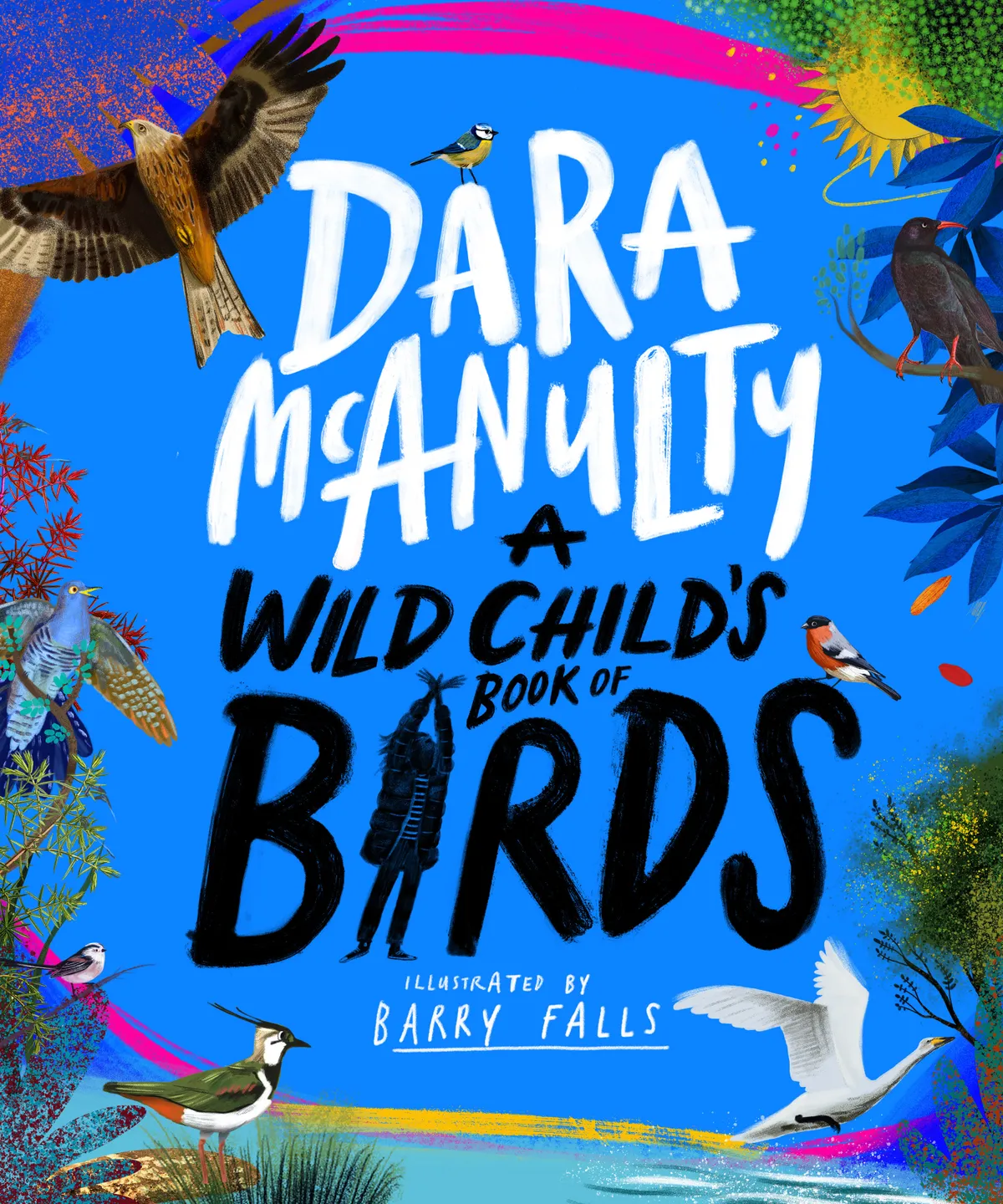
From author and naturalist Dara McAnulty, the 18-year-old winner of the 2020 Wainwright Prize for Nature and Conservation Writing, comes this beautifully illustrated introduction to the world of birds.
Split into sections that track the seasons, the book features dozens of species, from avocets to waxwings, barn owls to twites. Ornithological facts abound but this is much more than just a field guide. Packed full of charming personal reminiscences along with explainers on all matter of birdlife-related topics, it encompasses genres including history, science and literature.

The beaks and bills pages, for example, reference Darwin’s famous finches, while the feathers section includes a shout out to the “brave women who campaigned to save birds from the murderous millinery trade” in the 1920s.
Also in the mix are practical guides to recording bird calls, choosing bird food and cleaning feeders, all of which will encourage young readers to get out there birding for themselves.
Barry Falls’ illustrations add dynamism without compromising on accuracy – there’s almost a picture-book quality to it in places that younger children will love.
Reviewed by Jo Caird, freelance writer
The Extraordinary World of Birds
By David Lindo, illustrated by Claire McElfatrick. Published by DK. Age range: 7-9 years.
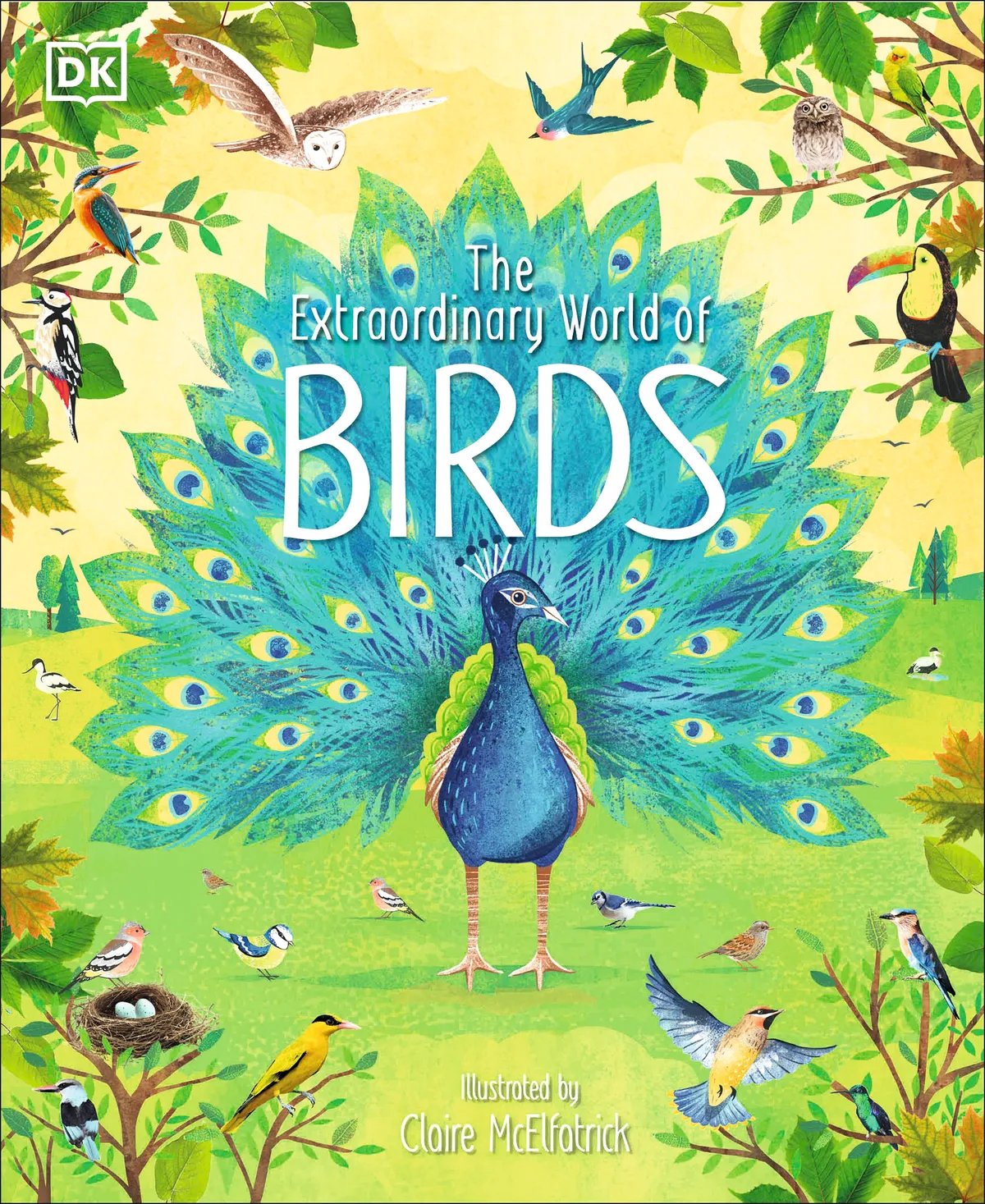
Writer and author David Lindo, also known as the Urban Birder, brings his passion for birds to his first book for children. It’s an exciting journey through the avian world, from the basics of what a bird is to the wide range of marvellous and fantastic adaptations of species worldwide.
There’s sections on different groups of birds (such as parrots, seabirds and waterbirds), behaviours and conservation, and it’s absolutely packed with facts. For example, did you know that the bee hummingbird is the smallest bird species in the world, with the males measuring only 5.5cm in length? Or that songbirds can breathe through one lung at a time, so they don’t have to pause for breath? Photographs combine with illustrations by Claire McElfatrick to bring the book alive.

This is the latest book in DK’s series celebrating nature, which also includes The Magic and Mystery of Trees (by Jen Green and produced in collaboration with the RHS), The Book of Brilliant Bugs and Earth’s Incredible Oceans (both written by veterinarian and presenter Jess French), all illustrated by McElfatrick.
Reviewed by Megan Shersby, BBC Wildlife, editorial and digital co-ordinator
Nests
By Susan Ogilvy. Published by Particular Books.
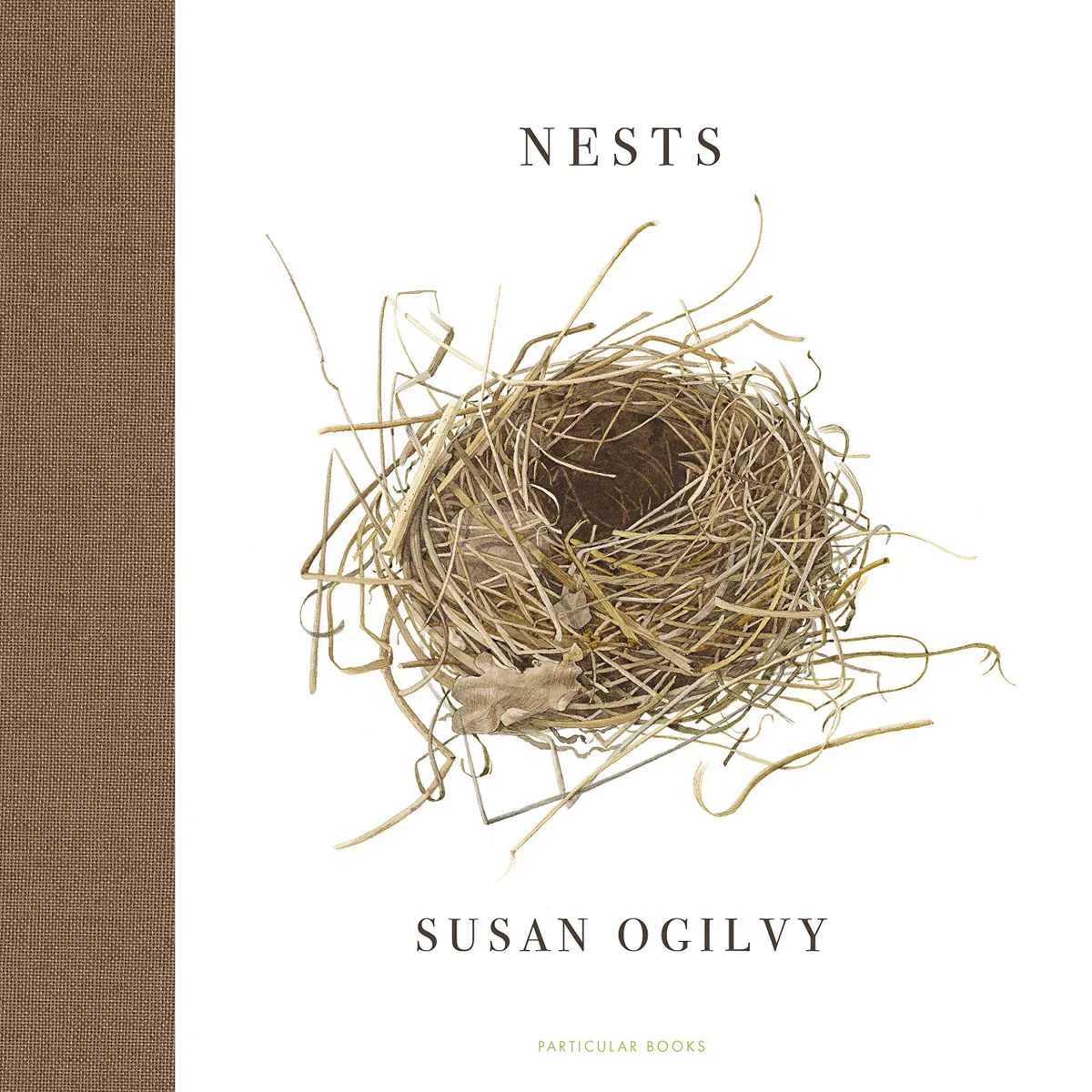
This isn't a book specifically aimed at children, but I decided to include it here nonetheless as it is a lovely book that some children will enjoy – I lent it to my neighbours (with two seven year old children), and they loved flicking through it and see the different illustrations.
Birds’ nests have long fascinated naturalists and artists, thanks to their intricate construction (the exception being the baffling mess that is a woodpigeon’s nest), and the variety between different species in their sizes, locations and materials used.
Susan Ogilvy is a botanical illustrator but veered into the world of birds’ nests after finding a sodden and unfinished chaffinch nest in her garden. Once dry, it was a jewel to behold, and she started painting the different nests that she and her family and friends came across (relying on finding either adandoned or displaced nests).

Each beautiful nest illustration is accompanied by information about the bird species, as well as where that specific nest was found.
Reviewed by Megan Shersby, BBC Wildlife, editorial and digital co-ordinator
What it's Like to be a Bird
By Tim Birkhead, illustrated by Catherine Rayner. Published by Bloomsbury. Age range: 7 years and above.
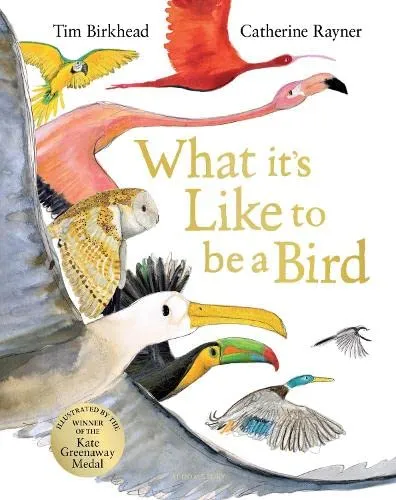
Ornithologist and author Tim Birkhead is a masterful storyteller, bringing a vast range of birds to life in this lively new book. What it’s Like to be a Bird does what it says on the tin: it places the reader in the bird’s position and with dramatic characterisation and colourful descriptions, shows us what it would be like to be a raven, a partridge or a red-capped manakin.
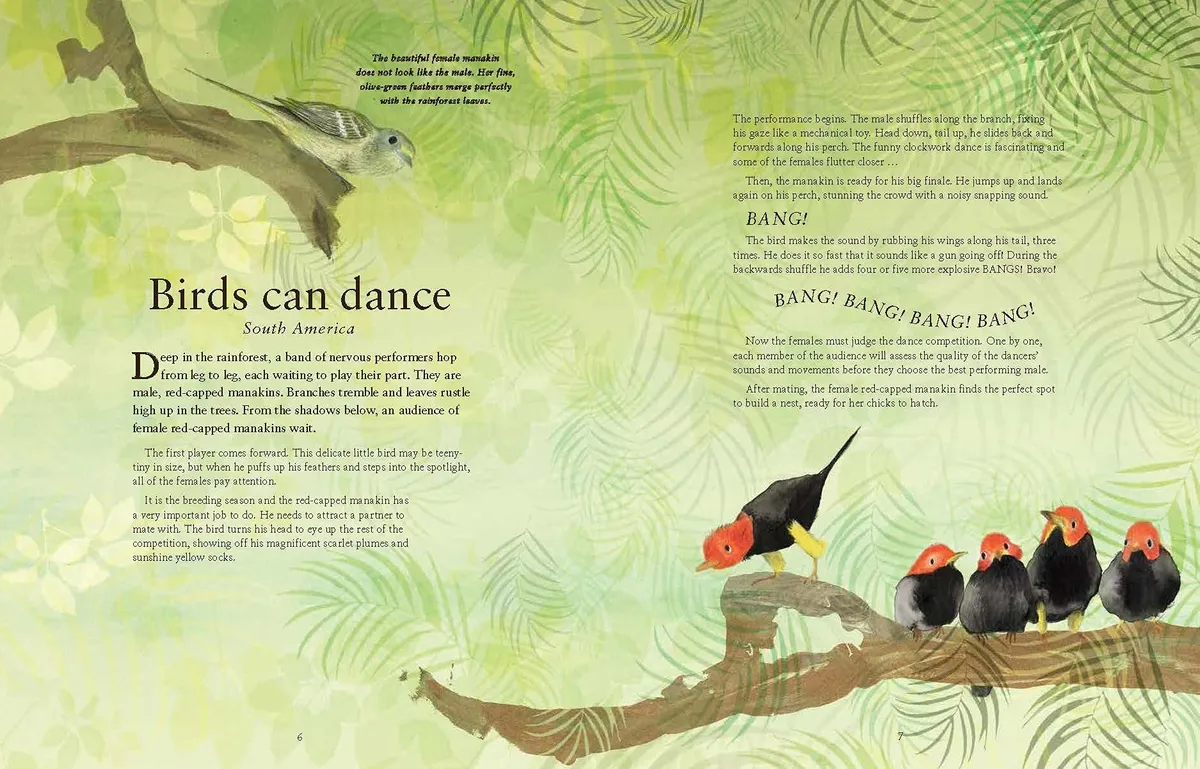
It’s not just Catherine Rayner’s illustrations that help bring Birkhead’s stories to life – it’s the dynamic typography too, with sentences and paragraphs shaped around the wings of a bird or standing out boldly from the rest.
Reviewed by Freya Parr, freelance writer
Twitch
By M.G. Leonard. Published by Walker Books. Age range: 9-13 years.
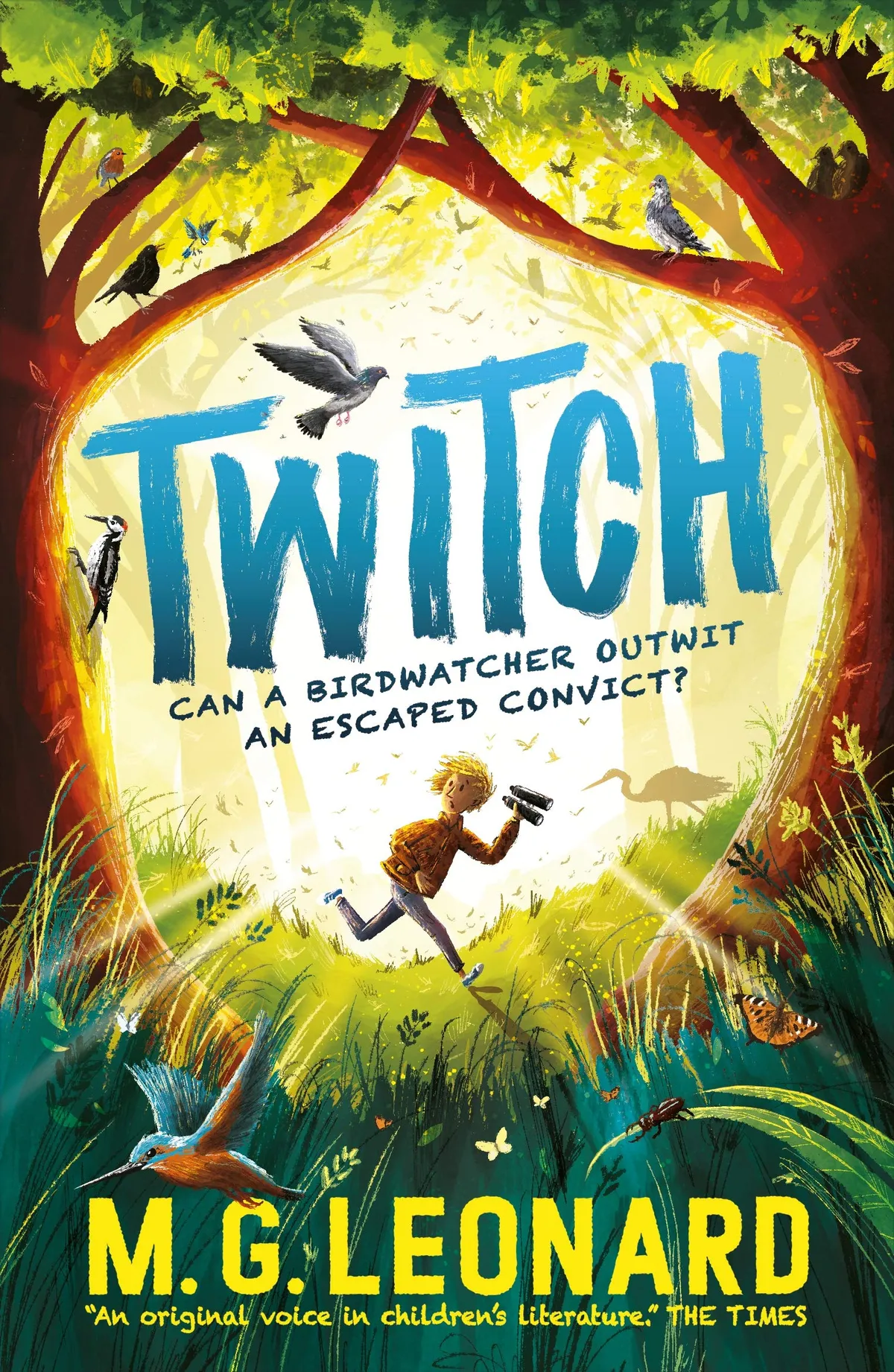
Beetle Boy author MG Leonard turns her attention to birds in the first of a new mystery series for kids. Twelve-year-old Twitch is an outsider who’d rather go off with his binoculars than hang out with his peers. Complete with woodland hideouts, kidnappings, disguises and an SOS sent by pigeon, Twitch is a good old-fashioned adventure story that feels like a modern-day Secret Seven.
It’s also a tale of friendship, of being yourself, of seeking solace in nature, and – well – of birds. It is imbued with delicious avian references. Swallows nest in Twitch’s bedroom; teapots are owl-shaped; and the finale, in which the kids apprehend the baddie by ‘murmurating’ around him like starlings, is simply genius.
Reviewed by Sarah McPherson, BBC Wildlife, features editor
Snow Birds
By Kirsten Hall, illustrated by Jenni Desmond. Abrams Books. Age range: 4-8 years
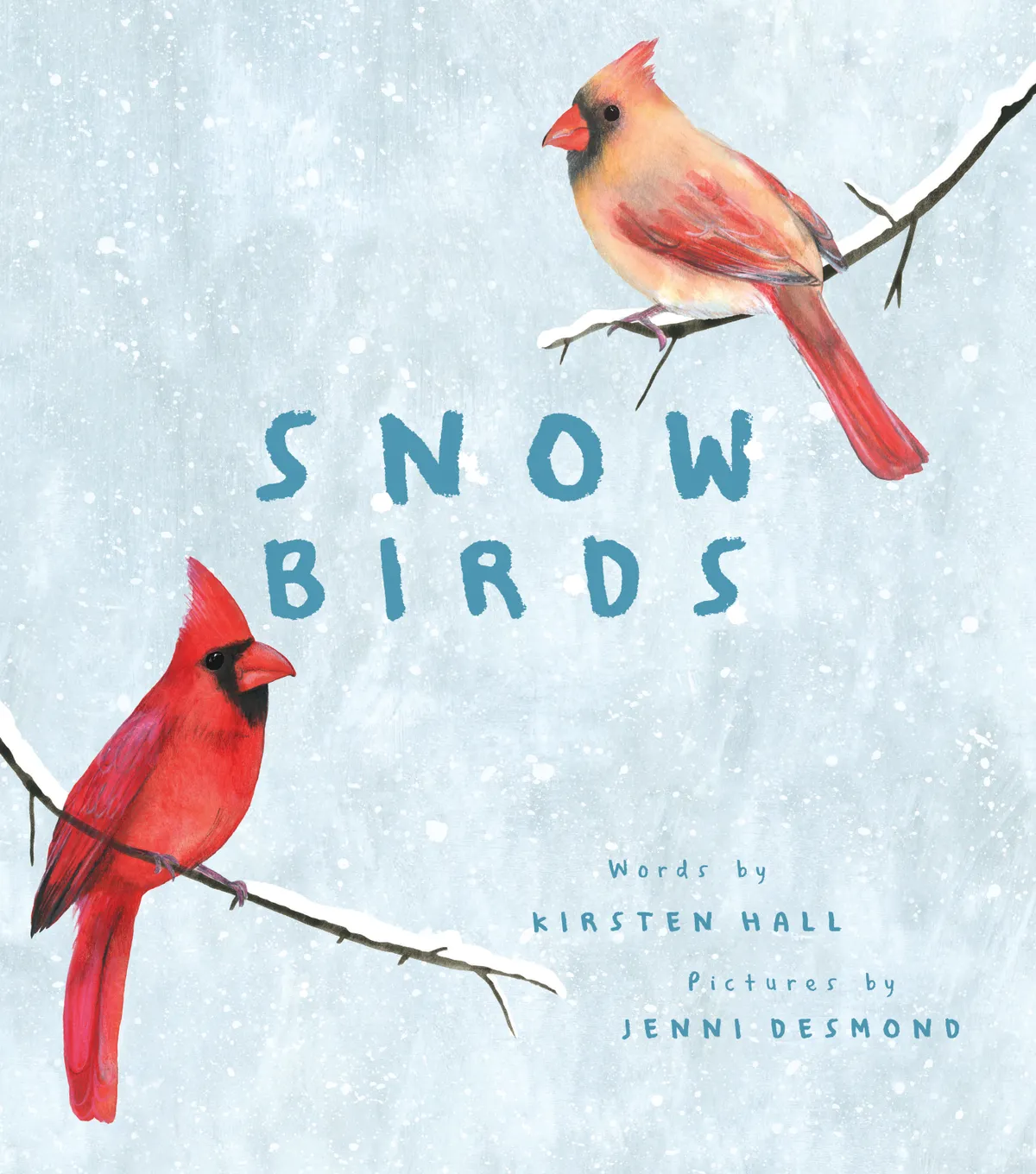
This book feels special from the moment you pick it up. Set in North America, each poem describes a different species and the challenges they face in winter: the great grey owl hunts for its next meal in three lines; golden-crowned kinglets huddle together for warmth; and the northern cardinal is filled with rhythmic hope of a coming spring.
Each poem captures the behaviours of the bird, not just in words but in construction, and is accompanied by the bird’s song and a captivating illustration. You can hear the downy woodpecker drilling and feel the solitude of the snowy owl perched atop a dune.
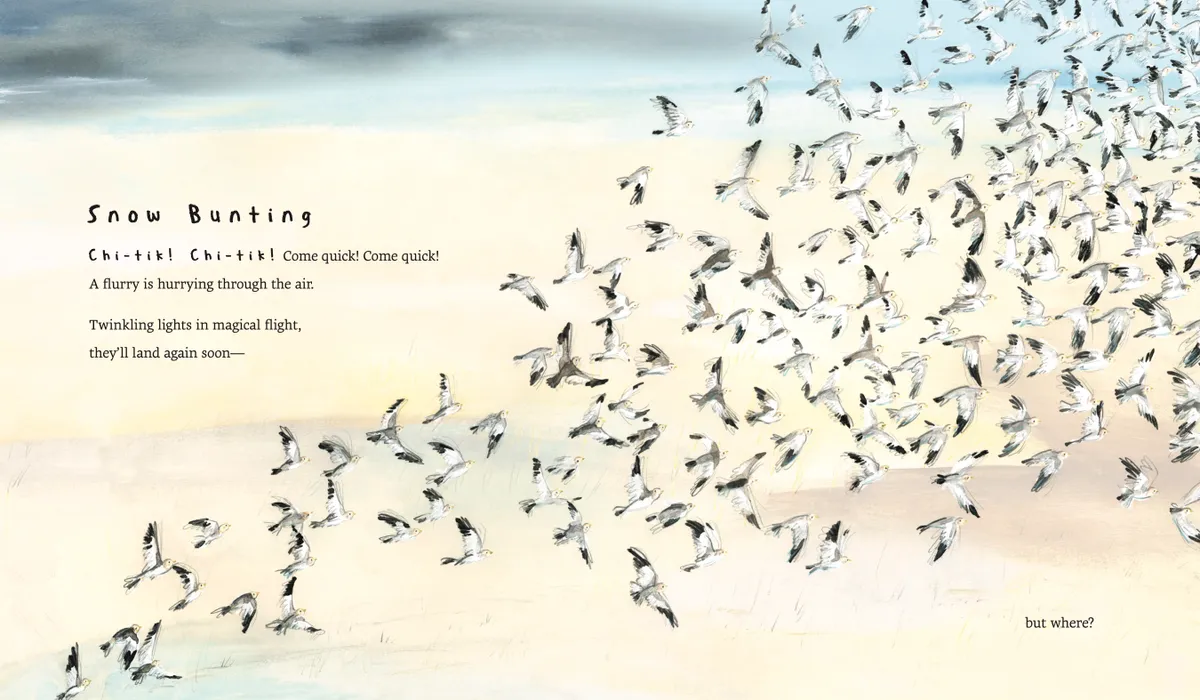
Curl up under a blanket with your little one and lose yourself in the elegant, descriptive poetry and striking artwork, which exquisitely depict the most dramatic season of the year. The perfect gift for children aged five and upwards, it will open their imaginations to a new world in winter.
Reviewed by Lucy McRobert, nature writer
Ruby's Birds
By May Thompson, illustrated by Claudia Dávila. Published by Cornell Lab Publishing Group. Age range 3-7 years.
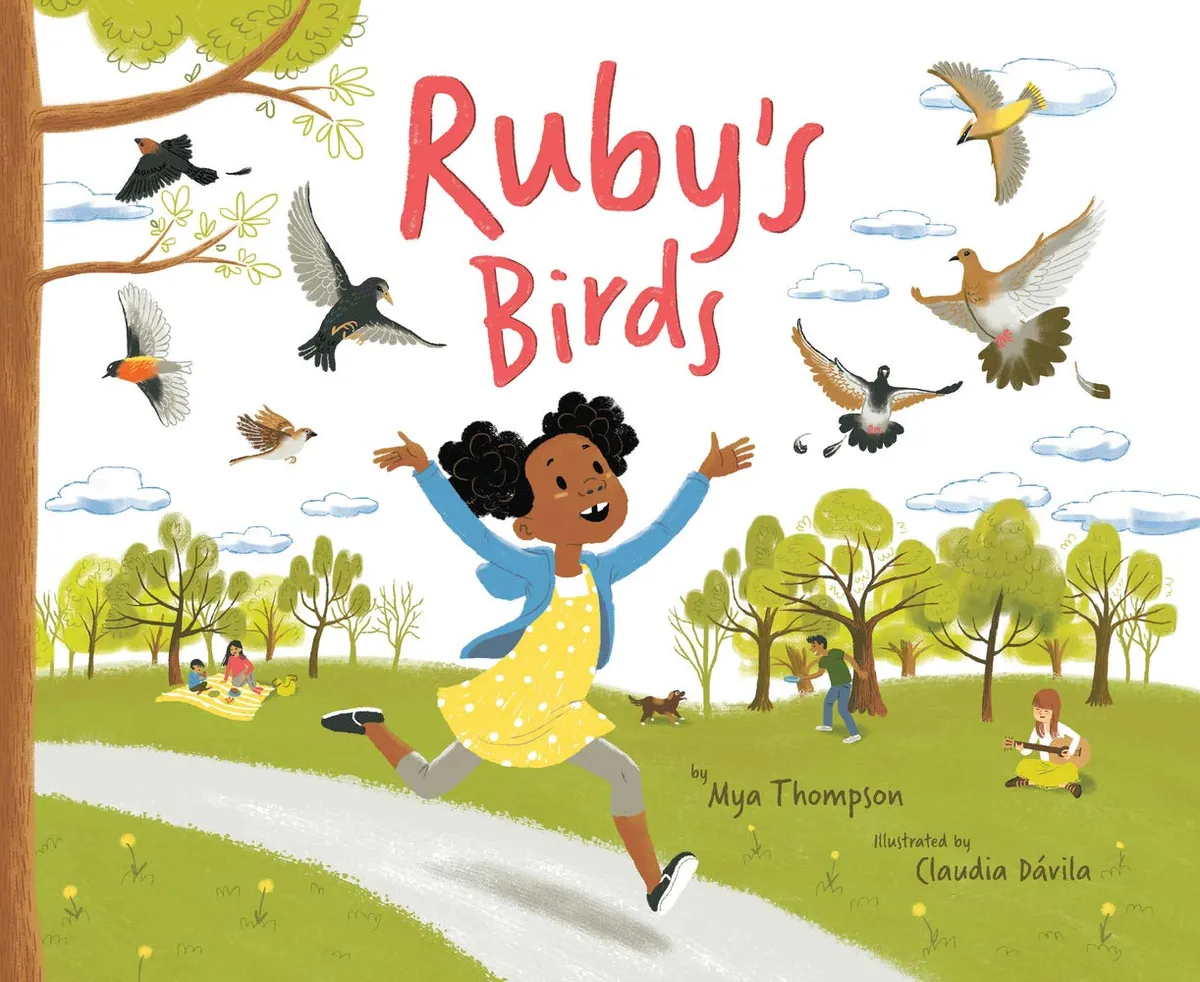
Ruby’s Birds tells the charming story of Ruby, a plucky young girl who discovers the fascinating wildlife in her New York City neighbourhood. The reader is swept up on Ruby’s journey of discovery, learning with her about all the birds she meets and picking up useful tips for taking a nature walk.
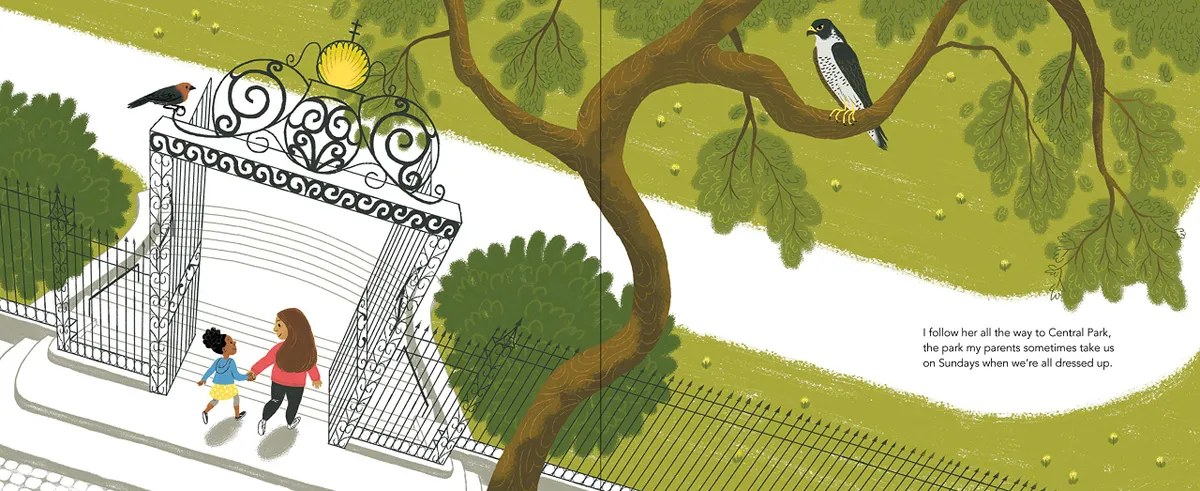
If you live stateside, there are handy hints for birdwatching in your local area, as well as pointers for how to spot anything from a mourning dove to a cedar waxwing. For readers in the rest of the world, there’s still plenty to enjoy here, thanks to the colourful illustrations by Claudia Dávila and insights into the world of urban birding.
If you want to see for yourselves... there are lots of readalongs of Ruby’s Birds online, such as this one from Hawk Mountain Sanctuary:
Please note that external videos may contain ads
Reviewed by Freya Parr, freelance writer
Birds
By Miranda Krestovnikoff, illustrated by Angela Harding. Published by Bloomsbury. Age range: 7-9 years.
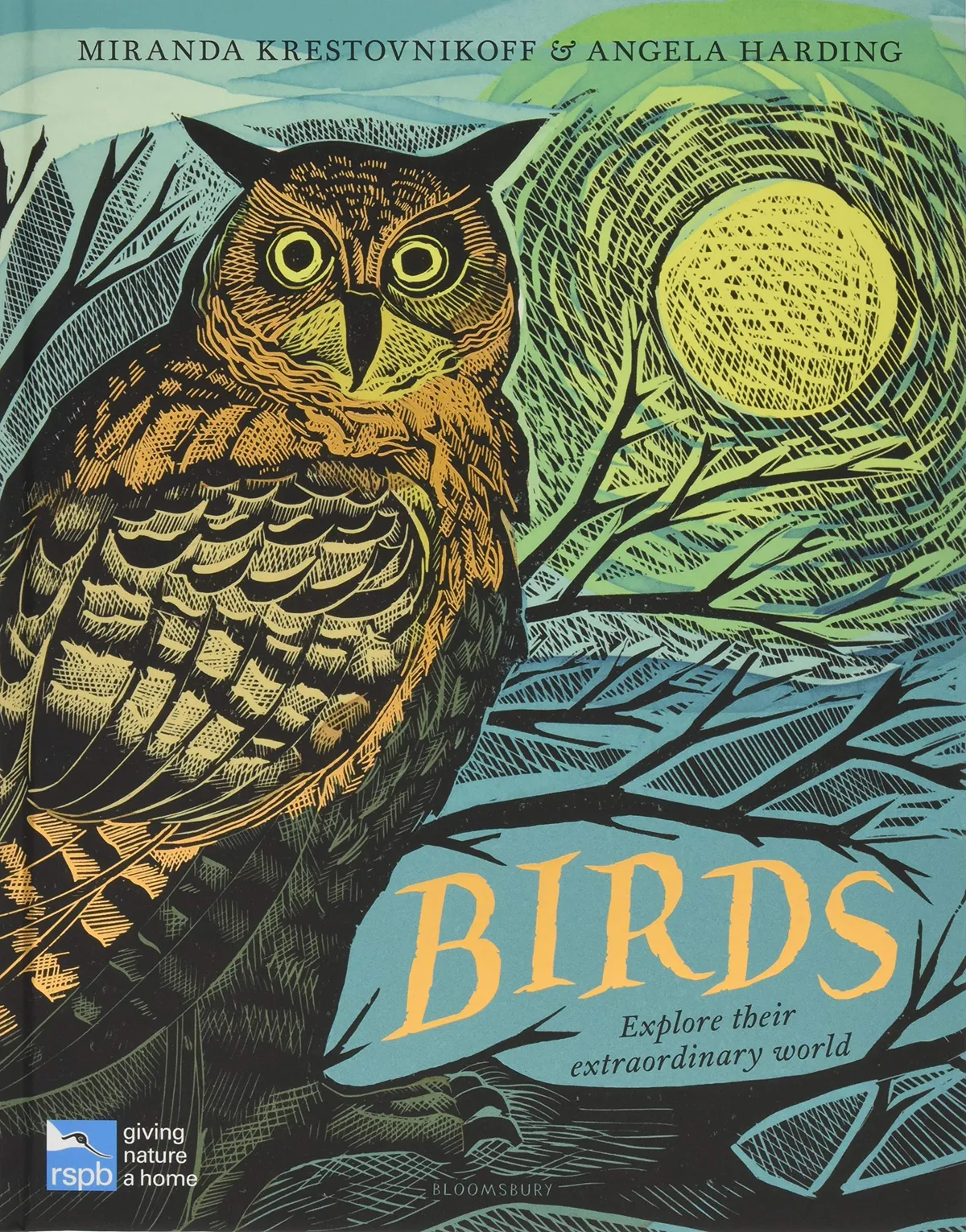
Meet some of the world’s most spectacular birds in this release from the RSPB president, Miranda Krestovnikoff, with bold, bright artwork by printmaker Angela Harding (whose marsh owl jigsaw puzzle we feature in our best wildlife-themed jigsaw puzzles round-up).
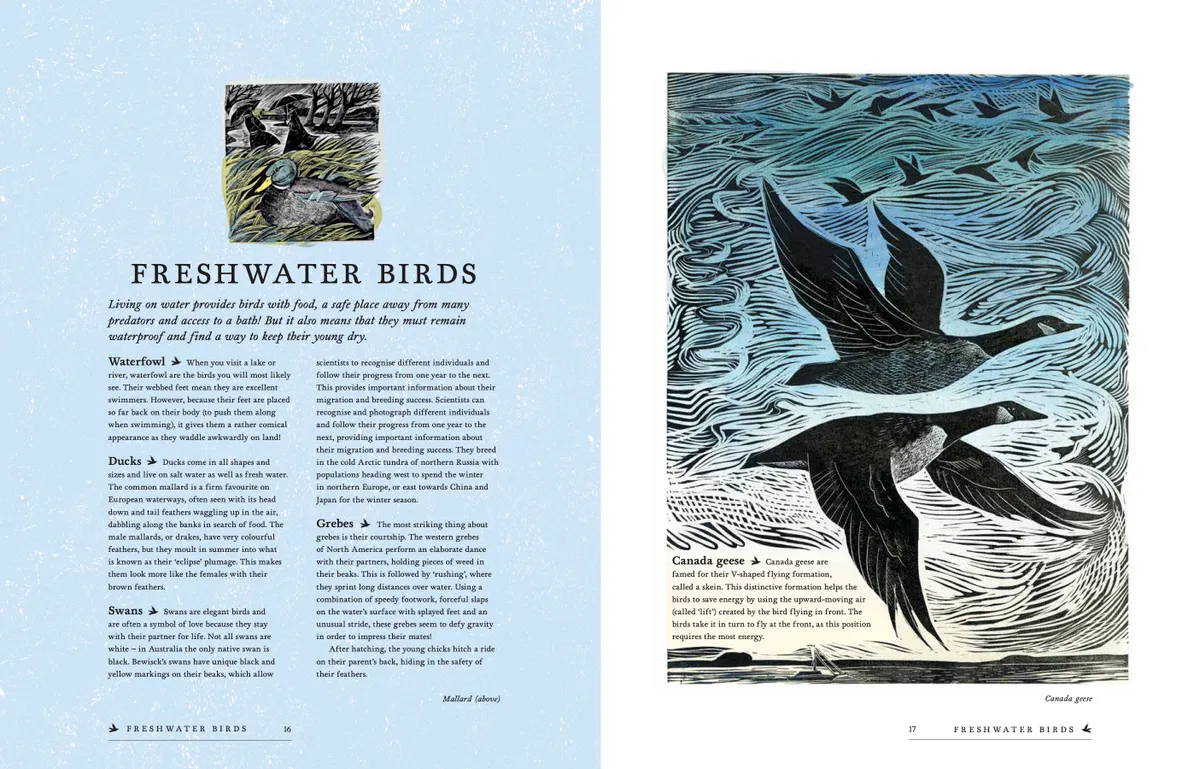
We are introduced to the birds one by one, with the golden eagle giving way to the owl, the secretary bird to the white-winged diuca finch. You can learn about what differentiates a jackass penguin from an emperor, and how to spot the different calls of songbirds in your garden. This is a book that can be enjoyed – and learned from – by adults and children alike.
You can watch Miranda Krestovnikoff herself read from the book here:
Please note that external videos may contain ads
Reviewed by Freya Parr, freelance writer
The Big Book of Birds
By Yuval Zommer. Published by Thames & Hudson. Age range: 6-8 years
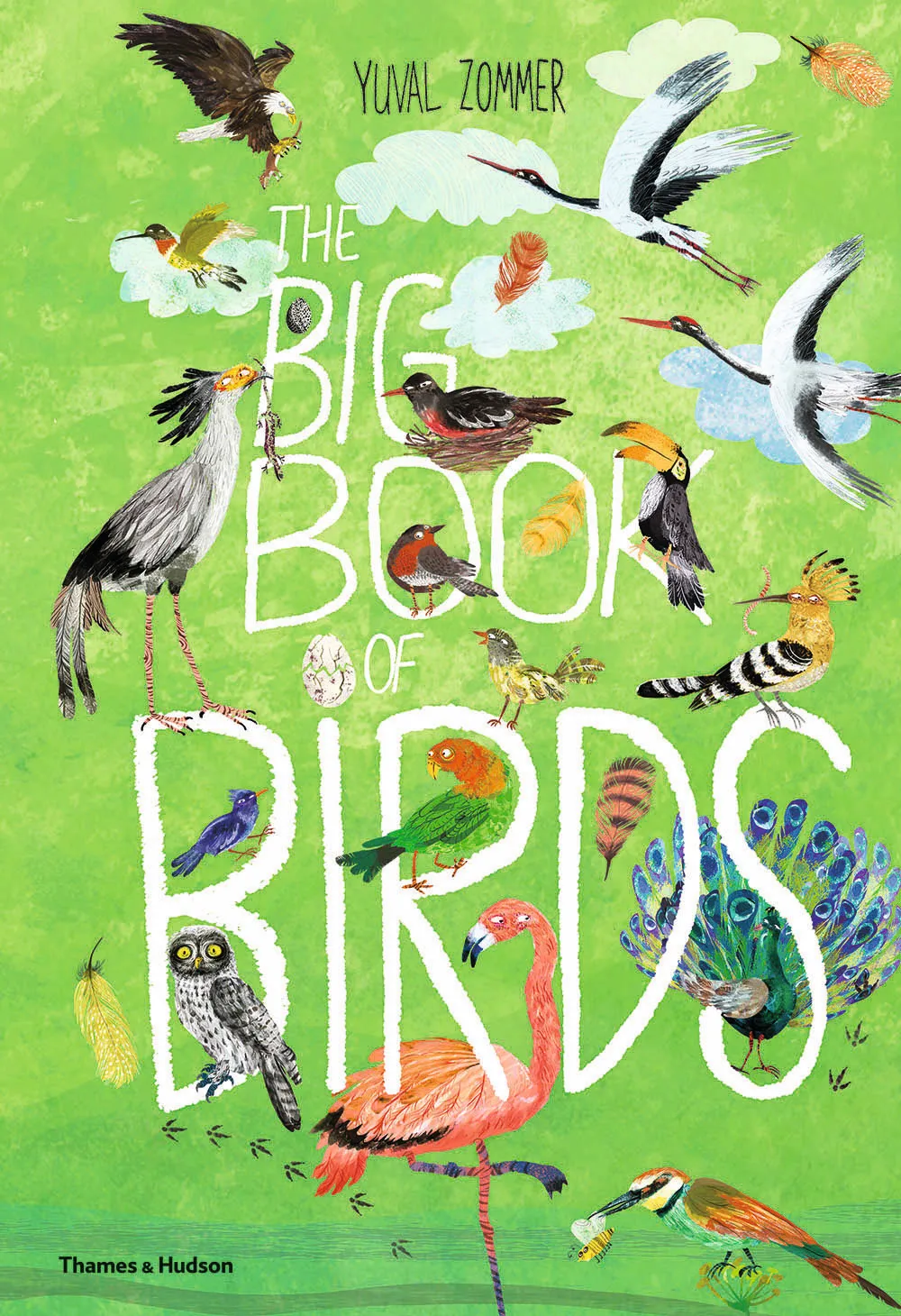
This generously proportioned hardback appeals to children’s natural curiosity. 26 double- page spreads pose bird-related questions (why is a flamingo pink?), furnish the answer (it eats shrimp) then offer four quirky titbits (a flamingo wees on its legs to cool down).
Spreads showcase ecological themes (such as nests and migration), individual bird species (including robins and red-crowned cranes) or families (albatrosses and hummingbirds), and offer practical advice (giving garden birds a home). The pages are busy with engaging illustrations that, enticingly, prioritise character over accuracy.
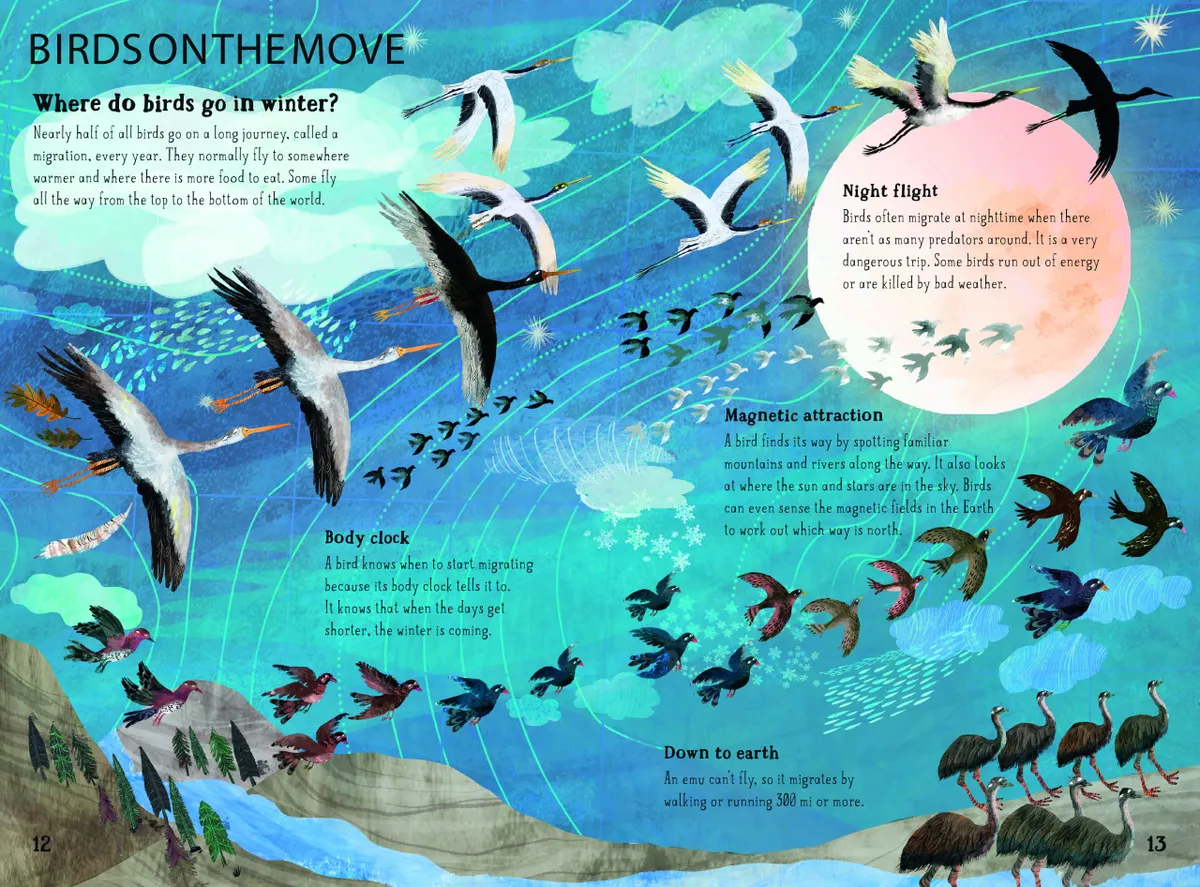
Regular anthropomorphism jars slightly (puffins ‘bump into’ and flamingos ‘dance with’ their ‘friends’) and the odd misguided statement is frustrating (urban peregrines nest on skyscrapers because it ‘reminds’ them of cliffs used ‘in the wild’). But such minor grumbles fail to detract from an enchanting product that provides perfect bird-oriented bedtime reading for inquisitive children and their parents.
There is an accompanying sticker book (paperback, £8.95): Amazon UK, Bookshop, Hive, Waterstones.
Reviewed by James Lowen, nature writer
10 Reasons to Love ... a Penguin/Lion/Bear/Turtle/Elephant
By Catherine Barr, illustrated by Hanako Clulow. Published by Frances Lincoln Publishers. Age range: 3-6 years.
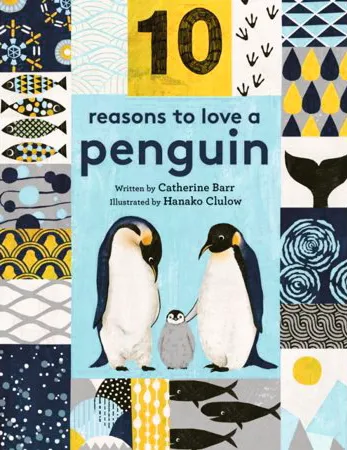
Delightful illustrations in these titles gently entice children into the world of their animal subjects. The concept of this established series is neat: each spread celebrates an enchanting dimension in the life of these charismatic creatures, pairing the artwork with a paragraph or two of succinct text.
Young readers learn, for instance, that penguins have salty sneezes and burrow into their own poo, and that lions ‘flip’ porcupines and are partial to catnaps. They’re then primed with relevant ways to ‘show their love’, from researching green energy to sponsoring a wildlife charity.
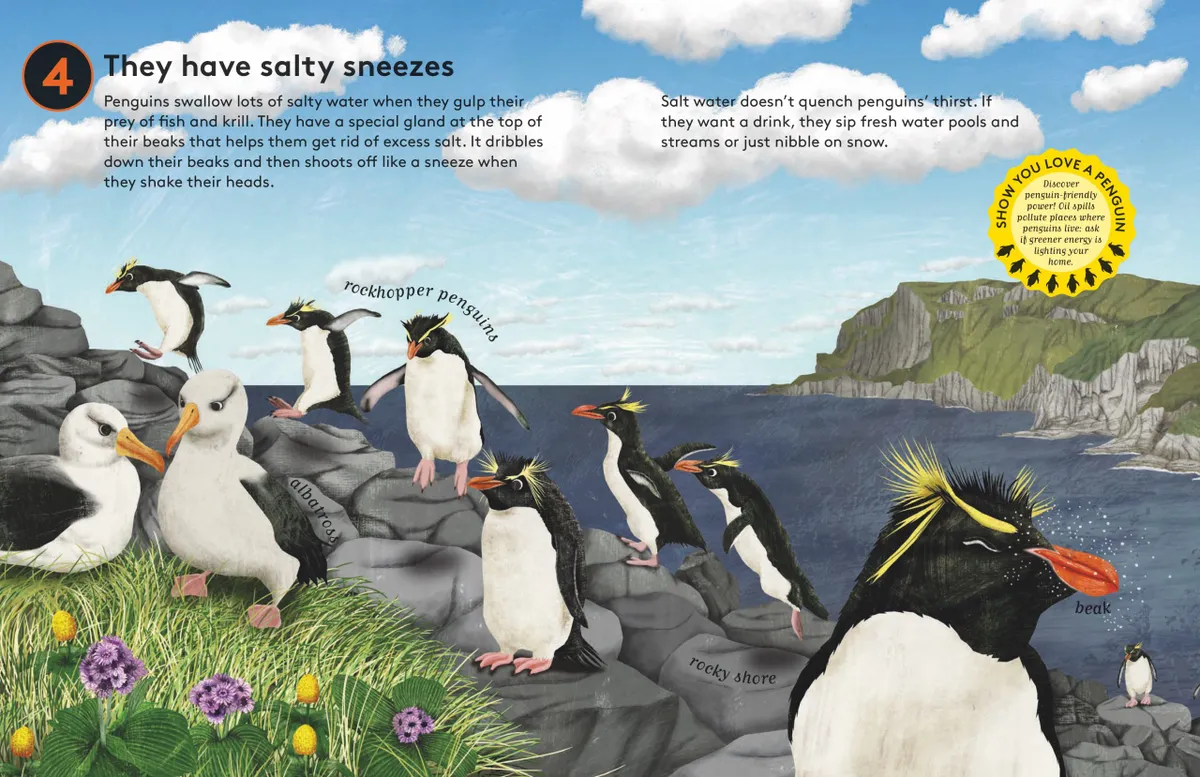
The text occasionally overgeneralises to the point of inaccuracy (South Africa is hardly ‘near’ Antarctica), and undue artistic licence is sometimes taken (Adélie penguins have black bills, not red), but these are minor quibbles
Reviewed by James Lowen, wildlife writer
The Little Book of the Dawn Chorus
By Caz Buckingham and Andrea Pinnington. Published by Fine Feather Press. Age range: 3 years and above.

Nothing can beat experiencing the dawn chorus first hand, however, this enchanting book makes a fine hors d'oeuvre to prepare your family for the real deal. The Little Book of the Dawn Chorus is part of an ongoing series that aims to attune both young and adult ears to the sounds of Britain's wildlife. The book's unique selling point is its sound bar, which provides instant access to the vocalisations of ten commonly heard birds in spring.
To my five-year-old son, who was happy to test the title's appeal, the experience of pressing bird-emblazoned buttons for instant aural gratification were a hit. Within five minutes his restless little fingers had played each of the different songs countless times.
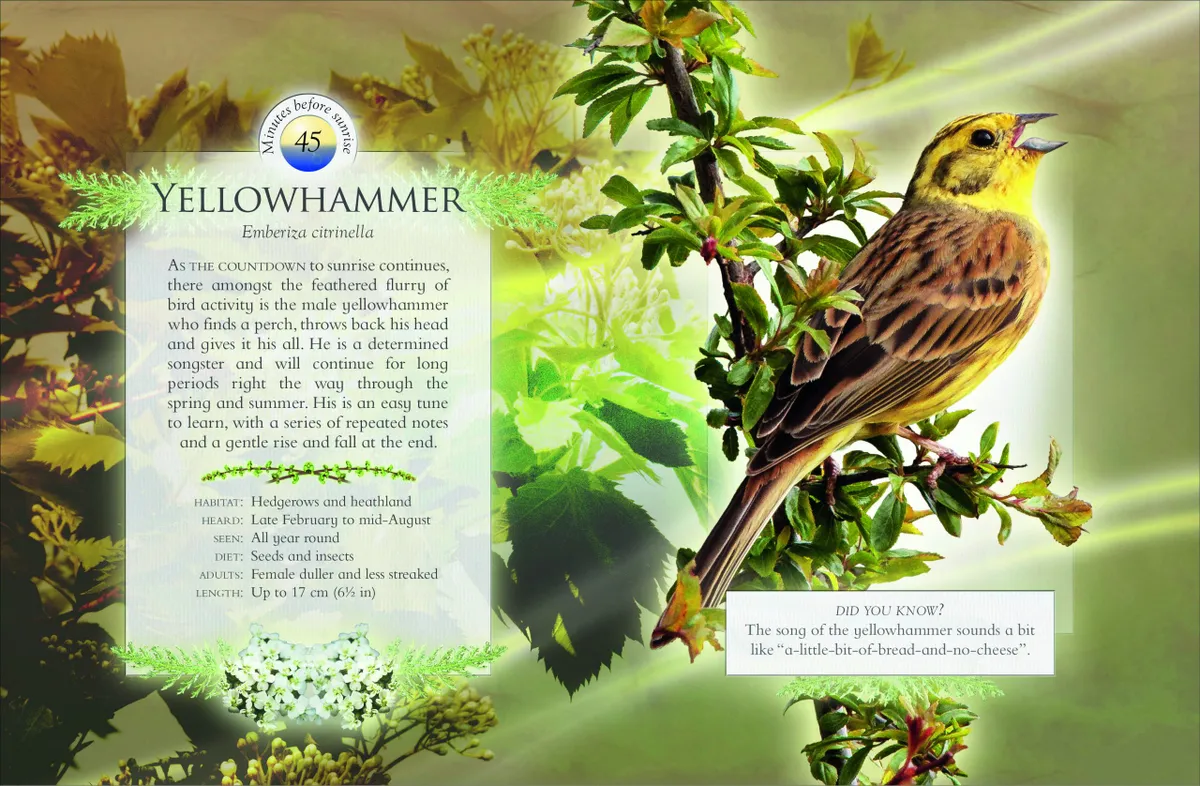
The carefully crafted text accompanying each species makes this book both fun and education but my only criticism would be the choice of the birds. I think blackcap and dunnock would have been better than swallow and house sparrow.
Reviewed by Mike Dilger, naturalist and broadcaster
A World of Birds
By Vicky Woodgate. Published by Big Picture Press. Age range: 7 years and above.

As children, many of us probably spent more than one wet day poring over Dorling Kindersley-style illustrated books, eagerly taking in the facts and figures.
Vicky Woodgate’s A World of Birds uses a similar fact-based approach to introduce a selection of 75 species from across the globe, from magnificent frigatebirds to kingfishers to eclectus parrots. Special adaptive features are picked out, along with various quirky snippets on behaviour and biology.

While my three-year-old enjoyed the colourful illustrations and pointing out the species he recognised, the book’s main appeal will be to slightly older children, who will no doubt delight in reciting their new-found knowledge: wild turkeys, for instance, can run at speeds of up to 40kmph; bee hummingbird eggs are the size of peas; and kingfishers have a third, transparent eyelid.
Reviewed by Kate Risely, British Trust for Ornithology